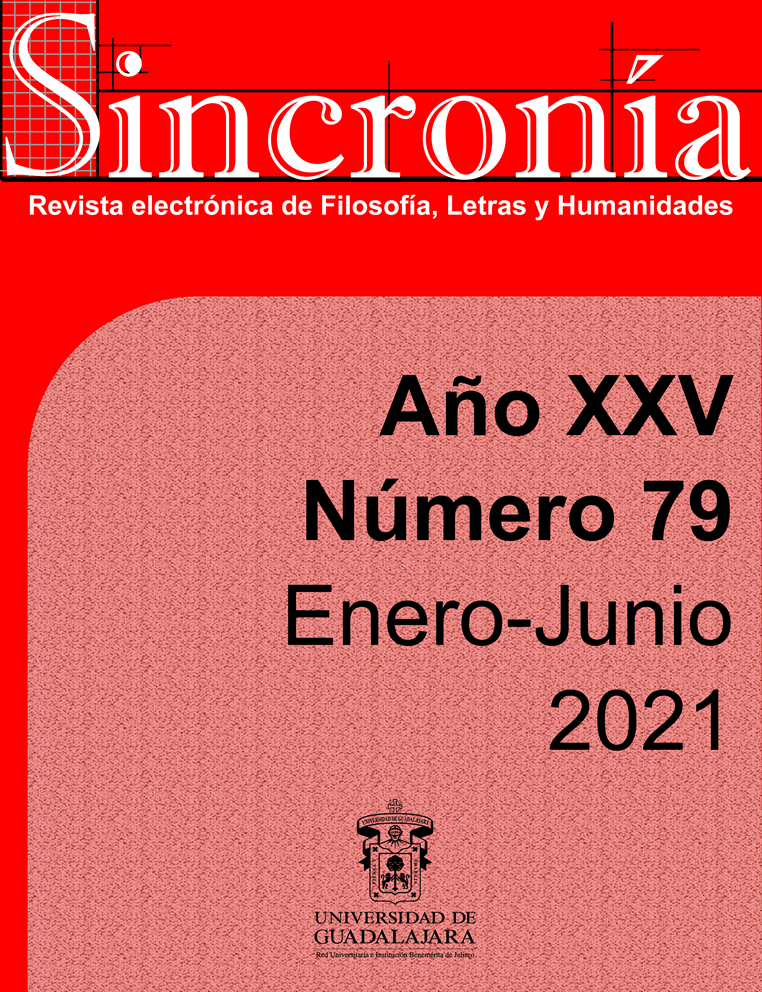Mexican prototypes and the migratory conflict in the film Coco, by Walt Disney
Keywords:
Hegemonic sign, Semantic nucleus., Identity., Border., Iillegal.Abstract
In the present paper, we propose to analyze a filmic text that, supposedly, was created for a children’s audience, it is the recent Walt Disney’s work Coco (2017), by directors Lee Ulrich and Adrian Molina. We will be guided by sociosemiotic notions and the critical analysis of discourse in order to study certain semantic marks related to the migratory phenomenon that is recorded along the border between Mexico and the United States. These semantic marks, due to their constant presence in other texts and situations, are assumed to be prototypical. According to the above, far from “paying tribute” to Mexican culture, Coco stigmatizes certain practices of that culture. The “media machine” with which Disney supports this product allows the “naturalization” of such prototypical vision.
Downloads
References
Anderson, B. (1997). Comunidades imaginadas. Reflexiones sobre el origen y la difusión del nacionalismo. México: Fondo de Cultura Económica.
BBC Mundo (2016). 10 frases de Donald Trump sobre México y los mexicanos que ‘le ponen picante’ a su reunión con Enrique Peña Nieto. https://www.bbc.com/mundo/noticias-america-latina-37231890
Baron-Cohen, S. (2010). La teoría de la concordia en el emparejamiento. En J. Brockman (Ed.), Mente (pp. 193-202), Barcelona: Crítica.
Churchland, P. S. (2012). El cerebro moral. Lo que la neurociencia nos cuenta sobre la moralidad. Barcelona: Paidós.
Coria, J. F. (2017). Coco, un brillante homenaje a México. https://www.eluniversal.com.mx/espectaculos/cine/coco-un-brillante-homenaje-mexico
Crespo, M. V. (2014). “Polisemia y política del concepto de frontera”. En H. Crespo, L. G. Morales y M. A. Navarro (coords.), En torno a fronteras e intelectuales. Conceptualizaciones, itinerarios y coyunturas institucionales (pp. 15-27). México: Ítaca-UAEM.
Cros, E. (1986). Literatura, ideología y sociedad. Madrid: Gredos.
Díaz del Castillo, B. (1983). Historia verdadera de la conquista de la Nueva España. México: Patria.
Dorfman, A. y Mattelart, A. (2013). Para leer al Pato Donald: comunicación de masas y colonialismo. México: Siglo XXI.
Mattelart, A. (1979). La cultura como empresa multinacional. México: Era.
Mena, R. (2016). Coco, la nueva película con homenaje a México. http://elhispanonews.com/coco-la-nueva-pelicula-con-homenaje-mexico-2/
Meseguer, A. (2017). ‘Coco’, el precioso homenaje de Pixar a México que te emocionará. https://www.lavanguardia.com/cultura/20171129/433267304433/coco-precioso-homenaje-pixar-mexico.html
Morales, A. (2015). Imágenes e ideología. Ensayos sobre muralismo y cine. Morelia (México): UMSNH.
Propp, V. (1999). (1999). Morfología del cuento. México: Colofón.
Ramón, E. (2017). ‘Coco’, el homenaje de Disney-Pixar a México en tiempos de Trump. http://www.rtve.es/noticias/20171121/coco-homenaje-disney-pixar-mexico-tiempos-trump/1637361.shtml
Rozat, G. (2010). Indios imaginarios e indios reales en los relatos de la Conquista de México. Veracruz (México): Universidad Veracruzana.
Salinas, R. (2018). ‘Coco’, un homenaje a México. https://www.elfinanciero.com.mx/opinion/ricardo-salinas-pliego/coco-un-homenaje-a-mexico
Ulrich, L. (2017). Coco [DVD]. Emeryville (USA): Disney-Pixar.
Wodak, R. (2003). “De qué trata el análisis crítico del discurso (ACD). Resumen de su historia, sus conceptos fundamentales y sus desarrollos”. En R. Wodak y M. Meyer (comps.), Métodos de análisis crítico del discurso (pp. 17-34). Barcelona: Gedisa.Meseguer, A. (2017). ‘Coco’, el precioso homenaje de Pixar a México que te emocionará. https://www.lavanguardia.com/cultura/20171129/433267304433/coco-precioso-homenaje-pixar-mexico.html
Morales, A. (2015). Imágenes e ideología. Ensayos sobre muralismo y cine. Morelia (México): UMSNH.
Propp, V. (1999). (1999). Morfología del cuento. México: Colofón.
Ramón, E. (2017). ‘Coco’, el homenaje de Disney-Pixar a México en tiempos de Trump. http://www.rtve.es/noticias/20171121/coco-homenaje-disney-pixar-mexico-tiempos-trump/1637361.shtml
Rozat, G. (2010). Indios imaginarios e indios reales en los relatos de la Conquista de México. Veracruz (México): Universidad Veracruzana.
Salinas, R. (2018). ‘Coco’, un homenaje a México. https://www.elfinanciero.com.mx/opinion/ricardo-salinas-pliego/coco-un-homenaje-a-mexico
Ulrich, L. (2017). Coco [DVD]. Emeryville (USA): Disney-Pixar.
Wodak, R. (2003). “De qué trata el análisis crítico del discurso (ACD). Resumen de su historia, sus conceptos fundamentales y sus desarrollos”. En R. Wodak y M. Meyer (comps.), Métodos de análisis crítico del discurso (pp. 17-34). Barcelona: Gedisa.
Downloads
Published
How to Cite
Issue
Section
License

This work is licensed under a Creative Commons Attribution-NonCommercial 4.0 International License.
You are free to:
- Share — copy and redistribute the material in any medium or format
- Adapt — remix, transform, and build upon the material
- The licensor cannot revoke these freedoms as long as you follow the license terms.
Under the following terms:
- Attribution — You must give appropriate credit , provide a link to the license, and indicate if changes were made . You may do so in any reasonable manner, but not in any way that suggests the licensor endorses you or your use.
- NonCommercial — You may not use the material for commercial purposes .
- No additional restrictions — You may not apply legal terms or technological measures that legally restrict others from doing anything the license permits.




























